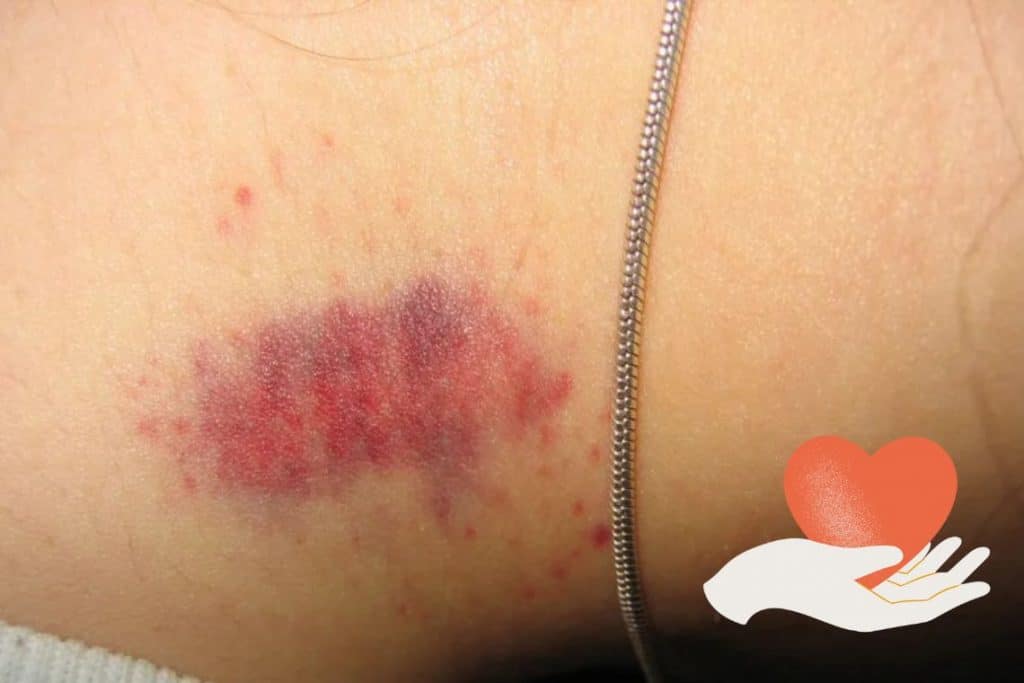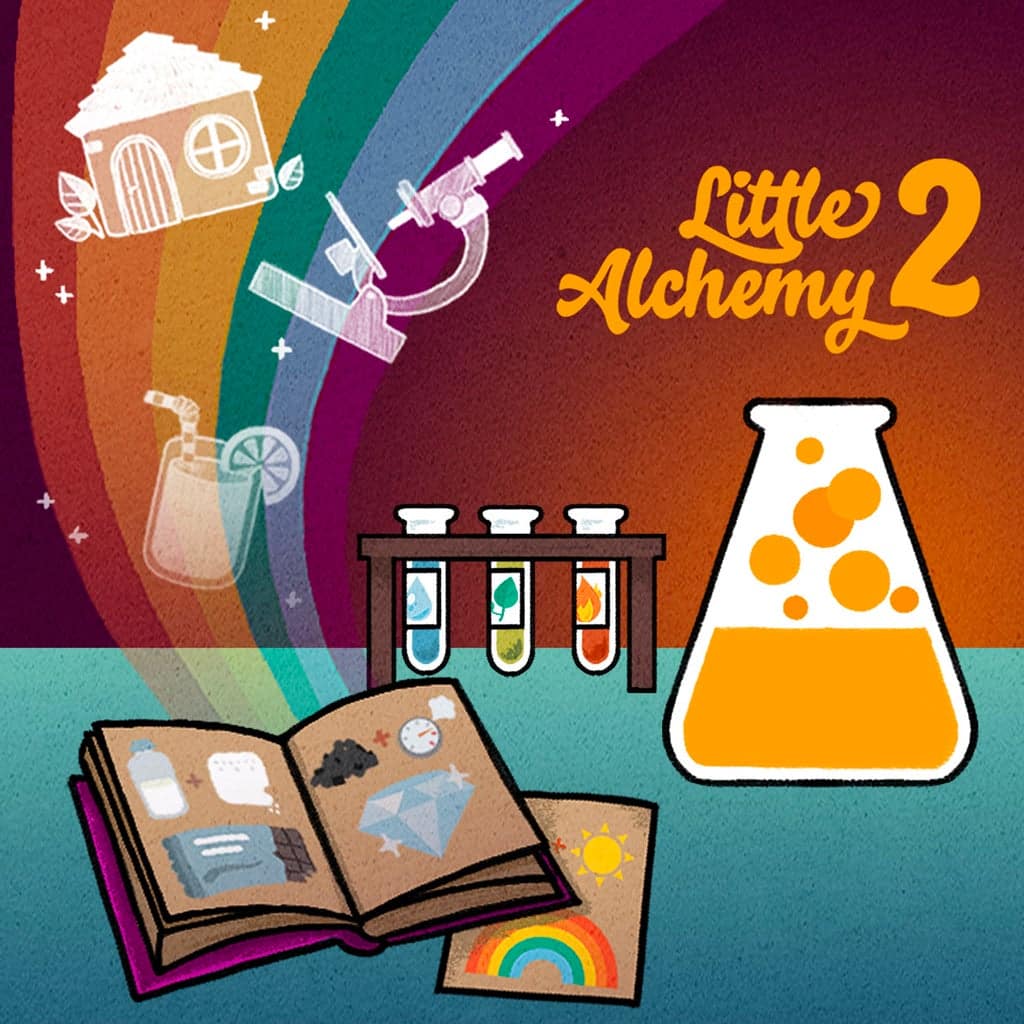An alcoholic face can be spotted by looking for red or flushed cheeks and nose. This can indicate long-term alcohol abuse.
Alcoholism is a serious issue affecting millions of people worldwide. Identifying the signs of alcohol addiction early on is crucial for early intervention and treatment. While an alcoholic face may not be the definitive proof of alcoholism, it can be a visible indication of long-term alcohol abuse.
Red or flushed cheeks and nose are common physical manifestations often associated with excessive alcohol consumption. Understanding these telltale signs can help individuals, friends, and family members recognize the potential presence of alcohol addiction and seek appropriate help. We will further explore the various facial characteristics that may suggest an individual is struggling with alcoholism.
Unveiling Signs And Symptoms
If you’re wondering how to spot an alcoholic face, keep an eye out for redness, puffiness, and broken capillaries. These signs and symptoms can indicate excessive alcohol consumption and should be taken seriously.
Facial Flush And Redness:
- Many people who suffer from alcoholism experience facial flush and redness as a common symptom.
- This redness typically affects the cheeks, nose, and sometimes the forehead.
- The excessive consumption of alcohol dilates blood vessels near the surface of the skin, causing a flushed appearance.
- The redness may resemble a sunburn or a persistent blush.
- Facial flush and redness are often more pronounced immediately after drinking alcohol.
Broken Blood Vessels And Spider Veins:
- Another sign of alcoholism that may manifest on the face is broken blood vessels and spider veins.
- These tiny, visible blood vessels can appear as red or purple lines on the cheeks, nose, chin, or even around the eyes.
- Alcohol consumption weakens the blood vessels, causing them to dilate and become more susceptible to damage.
- The constant pressure and dilation may lead to their permanent enlargement and the development of spider veins.
Swollen Or Puffy Face:
- Alcohol abuse can also result in a swollen or puffy face, especially in chronic alcoholics.
- The excess fluid retention in the body caused by alcohol affects various parts, including the face.
- Puffiness or swelling is often most noticeable around the eyes, cheeks, and jawline.
- It can give the face a bloated or rounded appearance, making the person appear different from their usual features.
- The swelling may be particularly prominent in the mornings and subside as the day progresses.
Rosacea-Like Symptoms:
- Alcohol consumption can trigger or exacerbate rosacea, a chronic skin condition characterized by redness, inflammation, and visible blood vessels.
- Some individuals with alcoholism may mistakenly attribute their facial redness to rosacea when it is actually caused by their drinking habits.
- The symptoms of alcohol-induced redness and rosacea can appear similar, but they have different underlying causes.
- It is crucial to consult a healthcare professional for an accurate diagnosis and appropriate treatment.
Dry And Patchy Skin:
- One of the consequences of excessive alcohol consumption is dry and patchy skin.
- Alcohol dehydrates the body, including the skin, leading to a lack of moisture.
- This dryness can result in rough and flaky patches on the face, making the skin appear dull and unhealthy.
- Additionally, heavy alcohol consumption may impair the body’s ability to produce new skin cells, further contributing to the patchy and uneven skin texture.
- Proper hydration and skincare routine are crucial for improving the condition of the skin.
Remember, recognizing these signs and symptoms on someone’s face does not provide a definitive diagnosis of alcoholism. If you or someone you know is struggling with alcohol abuse, it is essential to seek professional help for a proper assessment and guidance towards recovery.
The Eyes As Windows To The Soul
The eyes, often described as windows to the soul, can help spot signs of alcoholism. Keep an eye out for bloodshot eyes, frequent redness, or sluggishness in the gaze, as these could indicate a potential issue.
The eyes are often referred to as windows to the soul, and when it comes to spotting signs of alcoholism, they can reveal quite a bit. By closely observing a person’s eyes, you can start to recognize certain telltale signs that may indicate a problem with alcohol.
This section will focus on three significant indicators: bloodshot or glassy eyes, bags or dark circles under the eyes, and yellowing of the whites of the eyes.
Bloodshot Or Glassy Eyes:
- Bloodshot or glassy eyes are often the most apparent giveaway of alcohol abuse. The blood vessels in the eyes become dilated and more visible, resulting in a red or pinkish appearance.
- This redness occurs because alcohol causes blood vessels to expand, leading to increased blood flow and irritation.
- Glassy eyes, on the other hand, can make a person appear disconnected or unfocused. They lack the usual brightness and clarity associated with sober individuals.
Bags Or Dark Circles Under The Eyes:
- Another visual clue to watch out for is the presence of bags or dark circles under the eyes.
- Excessive alcohol consumption can lead to poor sleep quality, resulting in puffy eyes, fluid retention, and prominent dark circles.
- These physical changes are often a result of alcohol disrupting the body’s natural sleep cycle and causing dehydration, both of which can contribute to under-eye puffiness and discoloration.
Yellowing Of The Whites Of The Eyes:
- A more severe sign of alcohol abuse is the yellowing of the whites of the eyes, known as jaundice.
- Jaundice occurs when the liver is unable to process bilirubin, a yellow pigment produced during the breakdown of red blood cells.
- Alcohol-related liver damage can lead to an accumulation of bilirubin, causing the eyes and skin to take on a yellowish hue.
It’s important to note that while these eye-related symptoms can indicate a potential issue with alcoholism, they are not definitive proof. If you suspect someone may be struggling with alcohol abuse, approach the situation with empathy and encourage them to seek professional help.
Remember, early intervention and support can make a significant difference in their recovery journey.
The Nose Knows: Nasal Indicators
Easily identify an alcoholic face through nasal indicators, such as redness, broken capillaries, and enlarged pores. Signs like these can help determine if someone has been excessively consuming alcohol.
When it comes to identifying signs of alcoholism, the nose can provide valuable clues. The nose is one of the most prominent facial features, and it can reveal signs of excessive alcohol consumption. Paying attention to the following nasal indicators can help you spot the telltale signs of an alcoholic face.
Enlarged Or Swollen Nose:
- The appearance of a significantly larger or swollen nose can be a visible sign of long-term alcohol abuse.
- The medical term for this condition is rhinophyma, which is specifically associated with alcohol-related rosacea.
- Rhinophyma occurs due to alcohol’s effect on the blood vessels and connective tissue in the nose, causing them to thicken and enlarge.
Redness And Inflammation:
- Alcohol can cause the blood vessels in the face to dilate and become more prominent, resulting in a flushed or red complexion.
- This redness and inflammation are particularly noticeable in the nose, cheeks, and chin.
- Over time, chronic alcohol abuse can lead to persistent facial redness, even when alcohol is not consumed at that moment.
Frequent Nosebleeds:
- Excessive alcohol consumption can weaken the blood vessels throughout the body, including those in the nose.
- Weakened blood vessels in the nose can result in frequent nosebleeds.
- People with alcoholism may experience nosebleeds more frequently, even with minor irritation or without any apparent cause.
These nasal indicators are not definitive proof of alcoholism but may serve as red flags for further evaluation. If you or someone you know exhibits these signs, it’s important to seek professional help and support. Remember, early intervention and assistance can make a significant difference in overcoming alcohol addiction and improving overall well-being.

Credit: nypost.com
Unraveling The Effects Of Alcohol On The Skin
Alcohol can have noticeable effects on the skin, leading to a distinct alcoholic face. Symptoms include redness, broken capillaries, puffiness, and premature aging. Recognizing these signs can help identify those struggling with alcohol addiction.
Alcohol consumption not only impacts our health but can also have noticeable effects on our skin. Here, we will explore the various ways that alcohol affects the skin, from dehydration and a dull complexion to premature aging and acne breakouts.
Additionally, we will delve into how alcohol can hinder the body’s wound-healing process. Understanding these effects can help us recognize and address the signs of alcoholism in individuals.
Dehydration And Dull Complexion:
Alcohol is a diuretic, meaning that it increases urine production and can lead to dehydration. This dehydration can manifest on the skin, causing it to appear dull and lackluster. The effects of dehydration include:
- Dry skin: Alcohol depletes the body of its natural moisture, leaving the skin feeling dry and tight.
- Flaky patches: Lack of hydration can lead to the formation of flaky patches on the skin’s surface.
- Dull complexion: Dehydration can create a lack of radiance and make the skin appear dull and lifeless.
Premature Aging And Wrinkles:
Excessive alcohol consumption can contribute to premature aging, resulting in the development of wrinkles and fine lines. The effects of alcohol on aging skin include:
- Collagen depletion: Alcohol interferes with the production of collagen, a vital protein that keeps the skin firm and supple.
- Loss of elasticity: With decreased collagen production, the skin loses its elasticity, leading to sagging and wrinkles.
- Increased appearance of crow’s feet: Alcohol can cause the blood vessels near the surface of the skin to dilate, resulting in the formation of visible fine lines around the eyes.
Acne Breakouts And Blackheads:
Alcohol can disrupt the skin’s natural balance, leading to increased acne breakouts and the formation of blackheads. The effects of alcohol on acne-prone skin include:
- Increased sebum production: Alcohol can stimulate the sebaceous glands, leading to excessive oil production and clogged pores.
- Inflammation: Excessive alcohol consumption can trigger inflammation in the body, which can worsen existing acne or cause new breakouts to occur.
- Blocked pores: Alcohol can disrupt the natural exfoliation process of the skin, leading to the formation of blackheads and whiteheads.
Delayed Wound Healing:
Alcohol can hinder the body’s natural wound-healing process, leading to slower recovery times. The effects of alcohol on wound healing include:
- Impaired blood flow: Alcohol can constrict blood vessels, reducing the delivery of oxygen and nutrients to healing wounds.
- Weakened immune response: Excessive alcohol consumption can weaken the immune system, decreasing the body’s ability to fight off infections and promote healing.
- Increased risk of complications: Prolonged alcohol use can lead to chronic conditions such as liver disease, which can further impair the body’s wound-healing abilities.
Understanding the effects of alcohol on the skin is crucial in identifying potential signs of alcoholism and seeking appropriate help and treatment. By addressing these issues, individuals can take steps towards healthier skin and overall well-being.
Delving Into Skin-Pigment Changes
Discover the telltale signs of alcoholism through skin-pigment changes. Learn how to spot an alcoholic face with valuable insights and expert guidance.
Skin-pigment changes are often among the visible signs that can help identify someone struggling with alcohol addiction. These changes in skin tone can vary, and they may indicate different levels of severity in alcohol consumption. Here, we will explore three specific skin changes that can occur due to alcoholism: Jaundice and yellowed skin, Angel’s kiss or alcoholic dermatitis, and Vitiligo-like patches.
—
Jaundice And Yellowed Skin
- The yellowing of the skin, commonly known as jaundice, is a distinct sign of liver damage caused by excessive alcohol consumption.
- This yellowing occurs due to a buildup of bilirubin in the bloodstream, which then gets deposited in the skin.
- Jaundice is often accompanied by other symptoms such as yellowing of the whites of the eyes, dark urine, and pale-colored stools.
- Long-term alcohol abuse can lead to serious liver conditions like cirrhosis, contributing to the development of jaundice.
- If someone exhibits jaundiced, yellowed skin, it is crucial to seek medical attention promptly to address the underlying liver damage.
—
Angel’S Kiss Or Alcoholic Dermatitis
- Angel’s kiss, also known as alcoholic dermatitis, is another skin-pigment change commonly associated with prolonged alcohol abuse.
- This condition manifests as a distinctive redness on the cheeks or nose, resembling a flushed appearance.
- The redness occurs due to dilated blood vessels, resulting from alcohol’s impact on the vascular system.
- Angel’s kiss is an indication that excessive drinking has begun to affect the body’s circulation and overall health.
- Addressing alcohol addiction and seeking medical assistance is essential to prevent further damage and potential complications.
—
Vitiligo-Like Patches
- In some cases, alcohol abuse can lead to the appearance of vitiligo-like patches on the skin.
- Vitiligo is a condition characterized by the loss of pigment-producing cells, resulting in white patches on the skin.
- Alcohol abuse compromises the immune system, potentially triggering vitiligo-like patches as an autoimmune response.
- These patches may appear on various parts of the body, including the face, hands, and limbs.
- It is worth noting that these patches can also be caused by other factors, so a proper medical diagnosis is crucial to pinpoint the underlying cause.
—
Identifying these skin-pigment changes associated with alcoholism can serve as a valuable early-warning system. If you or someone you know presents any of these symptoms, seeking professional help and support is essential. Early intervention and assistance can make a significant difference in addressing alcohol addiction and improving overall well-being.
Troubling Skin Conditions
Spotting an alcoholic face can be revealing, as troubling skin conditions may emerge. Look for redness, broken capillaries, puffiness, or acne, indicating potential alcohol abuse. Early detection is crucial for seeking help and support.
How To Spot An Alcoholic Face: Troubling Skin Conditions
Alcohol abuse can have various detrimental effects on the body, including the appearance of the skin. Are often an indicator of alcoholism. The following skin conditions are commonly associated with excessive alcohol consumption:
Dermatitis And Eczema:
- Persistent redness and inflammation of the skin
- Dry, itchy, and scaly patches on the face, especially around the eyebrows and nose
- Flaky, irritated skin that may develop blisters or crusts
- Scratching may worsen the condition, leading to bleeding and infection
Psoriasis And Excessive Itching:
- Raised, red patches of skin covered with silvery scales
- Itching that becomes more intense after consuming alcohol
- Psoriasis lesions typically appear on the scalp, elbows, knees, and lower back
- Excessive scratching can cause bleeding and skin thickening
Hives And Rashes:
- Itchy, raised welts on the skin that are usually red or skin-colored
- Rashes may appear suddenly and disappear within a few hours
- Alcohol can trigger histamine release, leading to hives and rashes
- These allergic reactions can occur on any part of the body
Experiencing these troubling skin conditions, either individually or in combination, may be indicative of an underlying alcohol problem. If you or someone you know displays these symptoms, seeking professional help is crucial. Alcoholism can have severe consequences for both physical and mental health, and early intervention is essential for recovery.
Unmasking The Emotional Toll
Discover the hidden signs of alcoholism by unmasking the emotional toll it takes on a person’s face. Learn how to spot the warning signs and take action towards recovery.
Alcoholism takes its toll not only on the physical well-being of individuals but also on their emotional and mental health. The emotional impact of alcoholism can be difficult to recognize, as individuals may try to hide or downplay their struggles.
However, there are several key signs that can help you spot the emotional toll of alcoholism. Let’s take a closer look at some of these signs:
Anxiety And Depression:
- Feelings of anxiety and depression are common among individuals struggling with alcoholism. Alcohol can initially provide a temporary relief from these emotions, but in the long term, it exacerbates these conditions.
- Anxiety and depression can manifest in various ways, including constant worry, frequent feelings of sadness or hopelessness, loss of interest in activities, changes in appetite, and difficulty concentrating or making decisions.
- It’s important to note that anxiety and depression can also contribute to the development of alcoholism, creating a dangerous cycle of self-medication and worsening mental health.
Mood Swings And Irritability:
- Alcoholism often leads to noticeable mood swings and irritability. These mood disturbances can range from sudden bursts of anger or aggression to periods of extreme sadness or frustration.
- Individuals struggling with alcoholism may find it challenging to regulate their emotions, leading to unpredictable and volatile behavior.
- Loved ones may notice sudden and unexplained changes in someone’s mood, with reactions that seem disproportionate to the situation.
Social Isolation And Withdrawal:
- Alcoholism can cause individuals to withdraw from social interactions and isolate themselves. This withdrawal can stem from shame, guilt, or a desire to hide their drinking habits.
- People with alcoholism may become less interested in activities they used to enjoy, prefer staying at home rather than socializing, and gradually distance themselves from family and friends.
- Isolation can further aggravate feelings of loneliness and depression, creating a vicious cycle that perpetuates the emotional toll of alcoholism.
Recognizing the emotional impact of alcoholism is crucial in understanding the full extent of the problem and providing appropriate support. By being aware of the signs of anxiety, depression, mood swings, irritability, and social withdrawal, you can offer understanding and compassion to individuals struggling with alcoholism.
Unveiling The Telltale Signs In Behavior
Spotting an alcoholic face requires paying attention to telltale signs in behavior, such as frequent slurred speech, bloodshot eyes, and a flushed complexion.
Alcoholism can often be detected by observing certain behavioral changes in an individual. From increased secrecy and denial to memory lapses and blackouts, these signs can serve as reliable indicators of a potential alcohol problem. In this section, we will explore two specific behavioral signs that may point to alcoholism: aggression and impulsivity, as well as memory lapses and blackouts.
Aggression And Impulsivity:
- Frequent displays of aggression and increased irritability towards others can be a sign of alcoholism.
- Impulsive behavior, such as making impulsive decisions without considering the long-term consequences, may also indicate a problem with alcohol.
Memory Lapses And Blackouts:
- Individuals struggling with alcoholism often experience memory lapses and blackouts, where they have no recollection of events that occurred during a certain period of time.
- Blackouts can range from partial to complete memory loss and may be related to episodes of heavy drinking.
It’s important to note that these signs do not definitively confirm alcoholism but can provide valuable insights into an individual’s behavior. If you or someone you know is exhibiting these signs, it may be beneficial to seek professional help and support in addressing any potential alcohol-related issues.
Remember, identifying these behaviors is just the first step. The road to recovery often requires compassion, understanding, and access to appropriate treatment options.
Frequently Asked Questions For How To Spot An Alcoholic Face
What Does Alcoholism Do To Face?
Alcoholism can lead to various negative effects on the face, such as redness, puffiness, broken blood vessels, and premature aging.
How Long Does It Take To Get Rid Of Alcoholic Face?
It typically takes several months for the alcoholic face to improve after ceasing alcohol consumption.
Can Your Face Recover From Alcohol?
Yes, your face can recover from the effects of alcohol.
How Do You Get Rid Of Drinkers Face?
To get rid of drinker’s face, try reducing alcohol consumption, staying hydrated, and using skincare products.
Conclusion
Recognizing the physical signs of alcoholism is essential in order to offer support and help those in need. By being observant and aware, we can identify certain tell-tale features that may indicate a person’s struggles with alcohol addiction. These signs, which include facial redness, broken capillaries, puffiness, and a droopy appearance, can serve as red flags for potential alcoholism.
It is important to approach the topic with empathy and understanding, as addiction is a complex issue that requires professional intervention. If you suspect someone may be suffering from alcoholism, it is crucial to encourage them to seek help and provide resources for treatment centers, support groups, and therapy.
Remember, offering assistance and support in a non-judgmental manner can make a significant difference in someone’s journey towards recovery.









